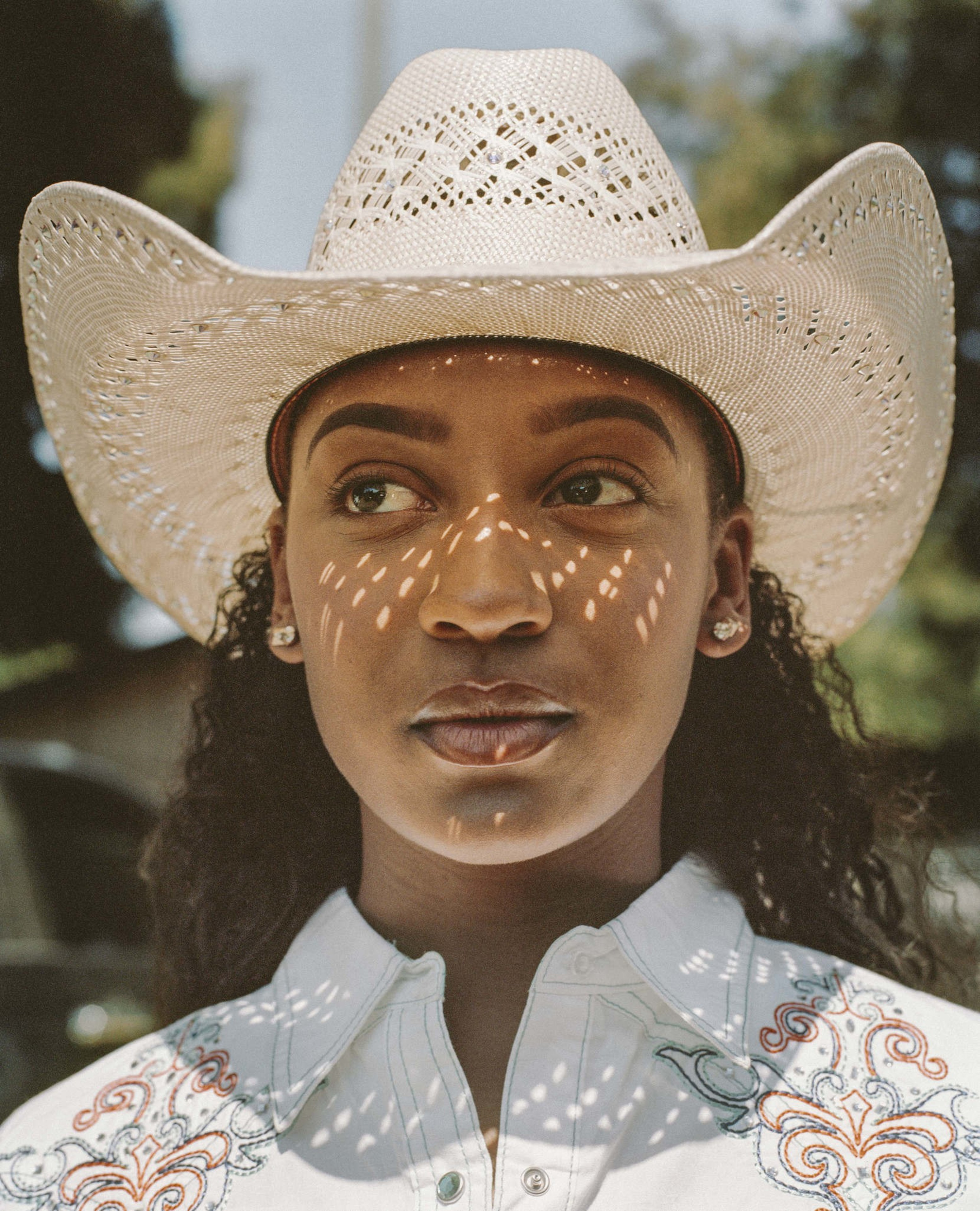The Wide Shot celebrates the work of Bay Area photographers, showcasing their latest projects and the behind-the-scenes stories of how they got the shots.
Gabriela Hasbun’s dedication to photographing the Bill Pickett Invitational Rodeo for more than a decade is a testament to the art of documentary photography. Her images not only record the event but highlight the vibrancy of the Black rodeo community, while challenging the prevailing narrative of the Western.
Black cowboys and cowgirls have contributed significantly to the culture of the American West. We see this in movies like “Sinners” and albums like Beyonce’s “Cowboy Carter.” Historically, the stories of Black cowboys have been overlooked or marginalized. Hasbun’s photographs, featured in her 2022 book “The New Black West, (opens in new tab)” play a vital role in correcting that record.
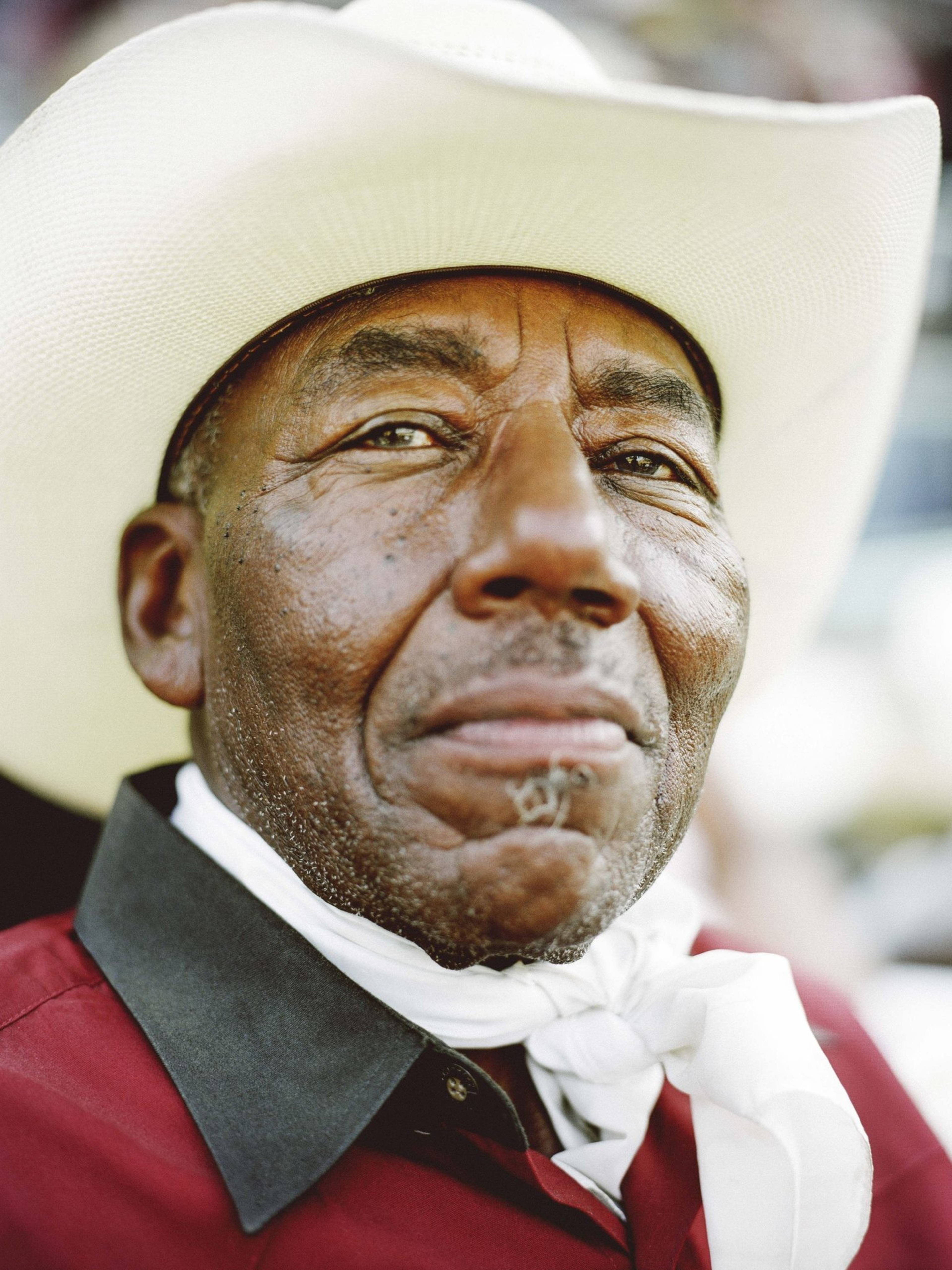
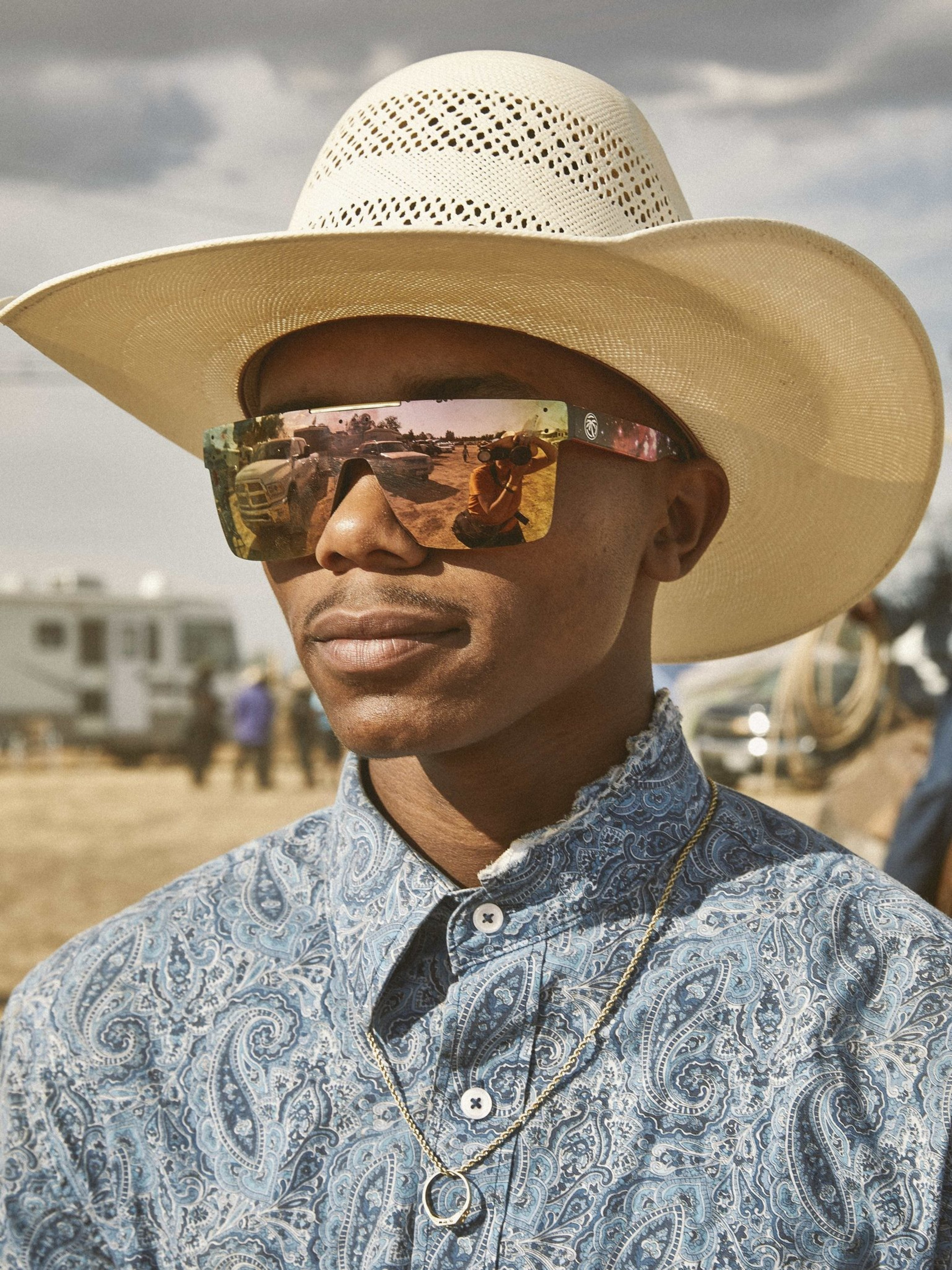
What inspired the project?
Strangely enough, it all started with a craving for fried catfish. My neighbor invited me on a quest to find the real deal. We ended up at the Bill Pickett Invitational Rodeo, which has been the only Black touring rodeo in America for the past 41 years. While the fish was good, it was the horses and the entire scene that pulled me in.
I had never been to a rodeo before. Growing up between San Salvador and Miami, it wasn’t something I was exposed to — especially not one that celebrated Black cowboys and history. Everything about it felt deeply American and yet completely new to me. I was captivated by the elegance, the grit, the pride.
I kept coming back, year after year, to photograph the riders and the families who gathered there, passing their love of horses down through generations. It became less about documenting and more about being part of something — witnessing a living legacy unfold in real time.
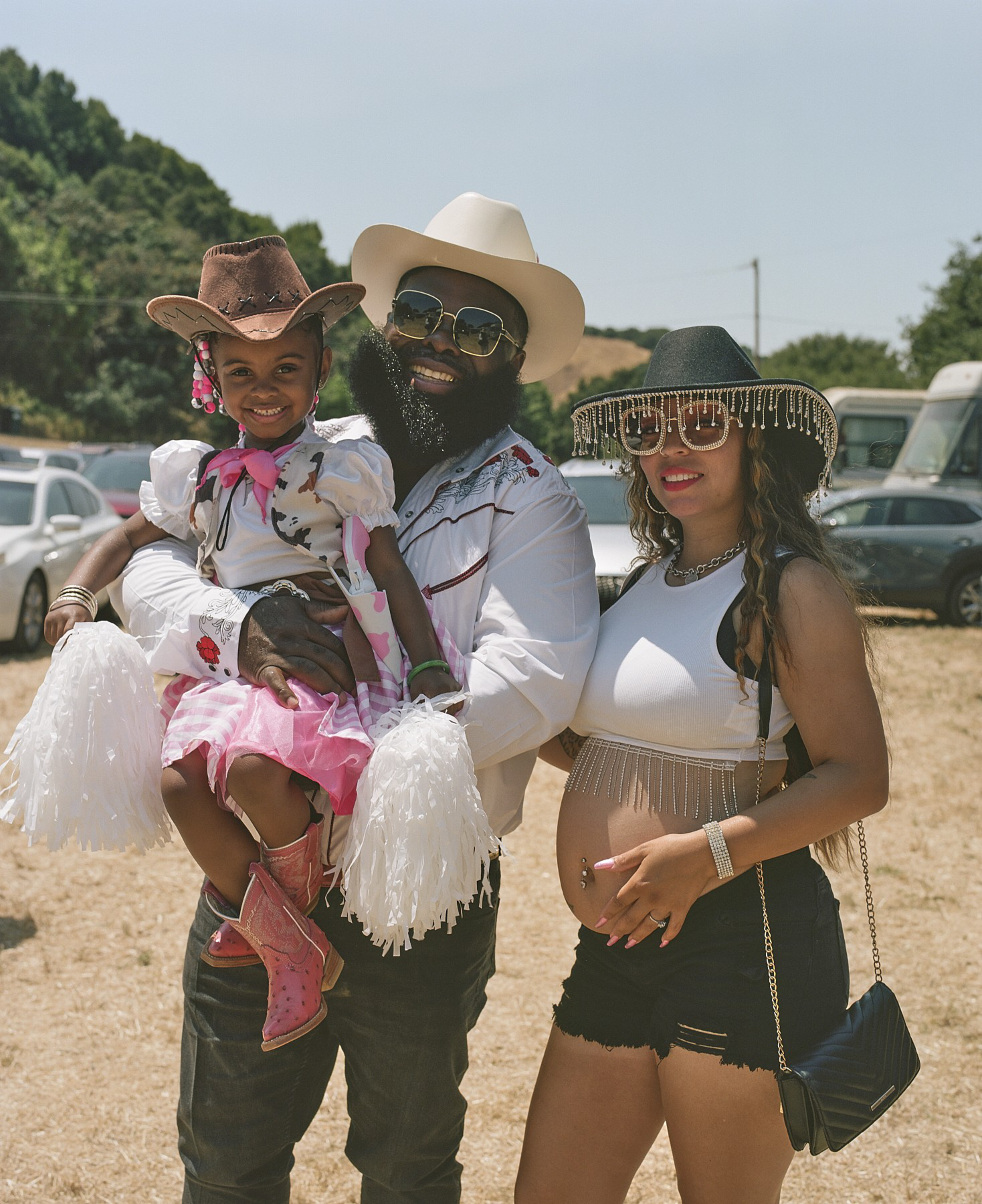
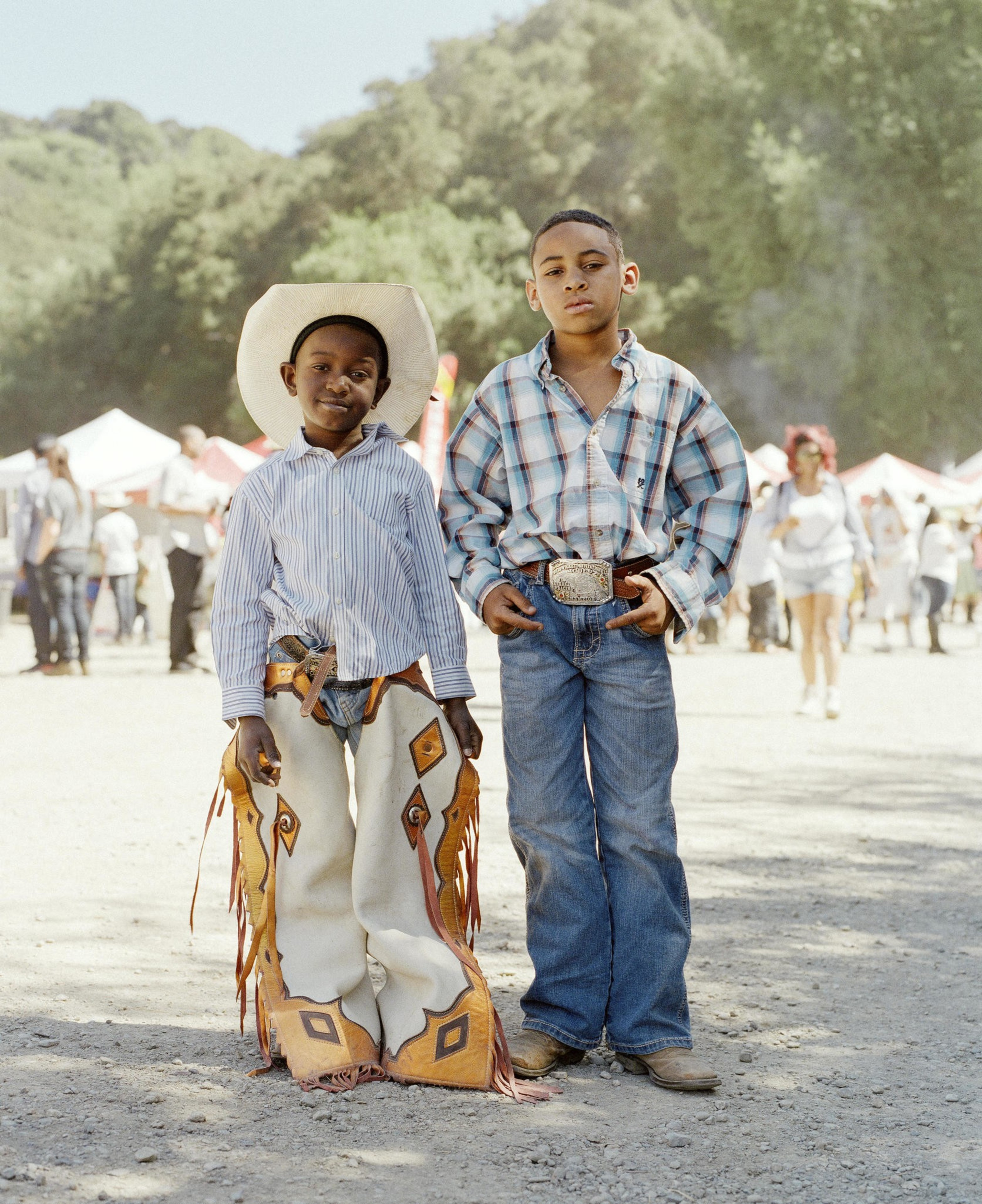
Tell us the story behind your favorite image.
One of my favorite images from “The New Black West” is a quiet but powerful portrait — a close-up of a woman’s manicured hand gently resting on a horse’s mane. The hand belongs to Deidre Webb, also known as Lady D, a retired beauty professional and rodeo regular who’s become a dear collaborator over the years.
We first met while I was photographing my friend, the legendary cowboy Mr. Theus. She walked up to greet him, and when I saw her blue nails glinting in the sun as they shook hands, I couldn’t help but ask her about them. She told me she did them herself — a small detail that spoke volumes about her artistry and care.
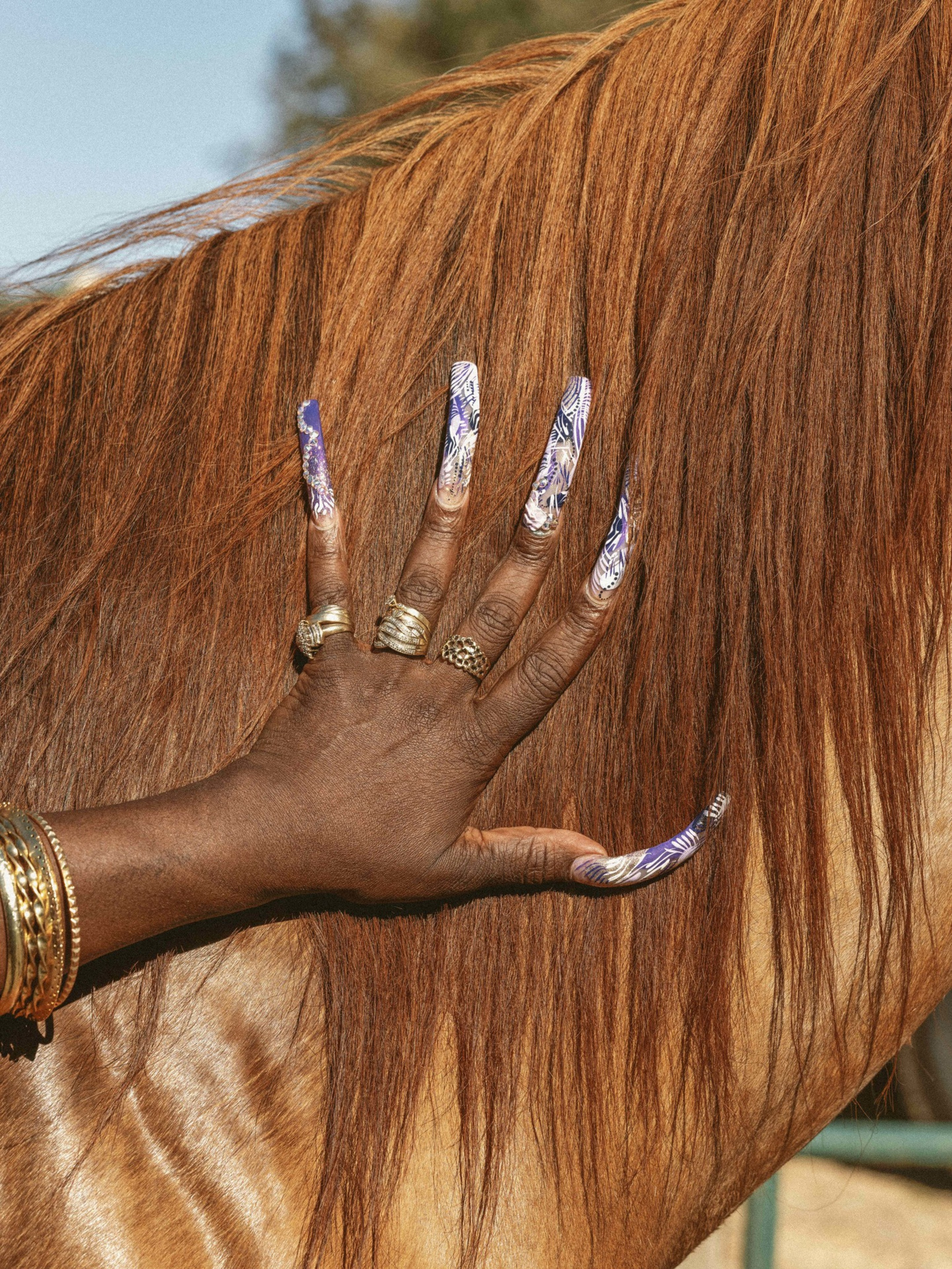
The following summer, we ran into each other again at the Oakland rodeo. After the events had wrapped, she was in the parking lot, petting one of the horses. I caught that moment — her hand on the animal, the contrast of softness and strength, style and tradition. That image has stayed with me.
What motivates you to keep returning to photograph the Bill Pickett Rodeo?
Over the years, the people I’ve met there have become my extended “rodeo family.” I come back to reconnect, to see how folks are doing, and to witness how their stories continue to unfold.
But there’s a deeper purpose too. I feel a real responsibility to document the beauty, joy, and relationships I’ve seen flourish over time. So often, the stories we hear about Black communities are shaped by struggle, not celebration. My hope is to shift that lens — to amplify the love, strength, and resilience I see every time I step into that arena. These are the kinds of stories that deserve to be told again and again.
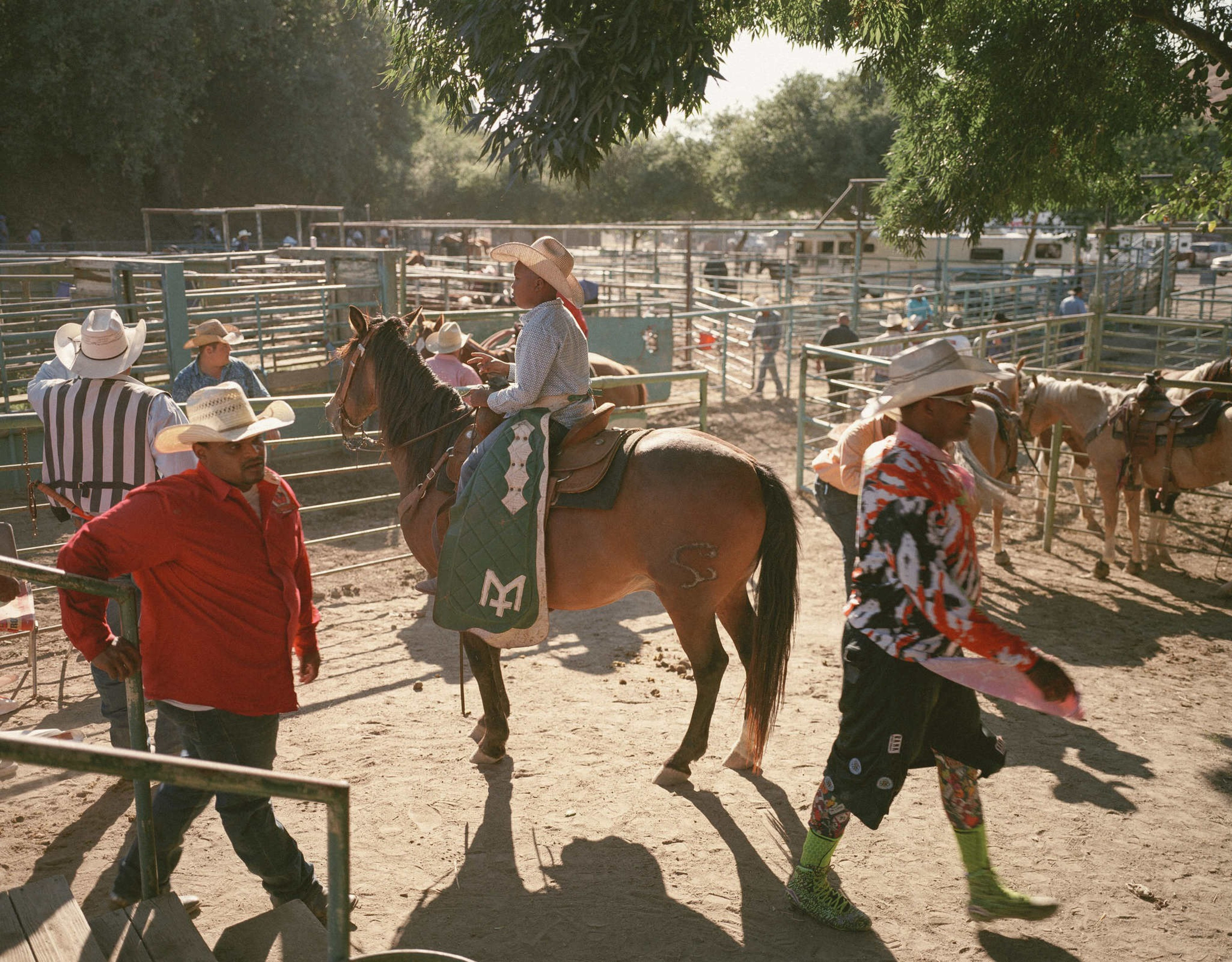



Why did you decide to photograph this project using a medium format camera, the Mamiya RZ67, and to shoot only on film?
The Mamiya RZ67 is my favorite camera I have owned. The only gear I bring is a light meter to help expose for subjects in the shade. Getting film at the lab still feels like being a kid at a candy store. Lots of surprises too.
Even with all the advances in digital photography, I keep coming back to film. There’s something grounding about it. It forces me to be more present, more decisive. I usually take only two or three frames per subject — just enough to capture what I need without over-shooting.
Shooting on film also means I spend way less time in front of a screen color-correcting. The tones and mood are already there, baked into the negative. It gives me more time to focus on the heart of the work — and honestly, it makes me a better editor too. I rarely take more than three frames per subject, so I am able to pace myself.


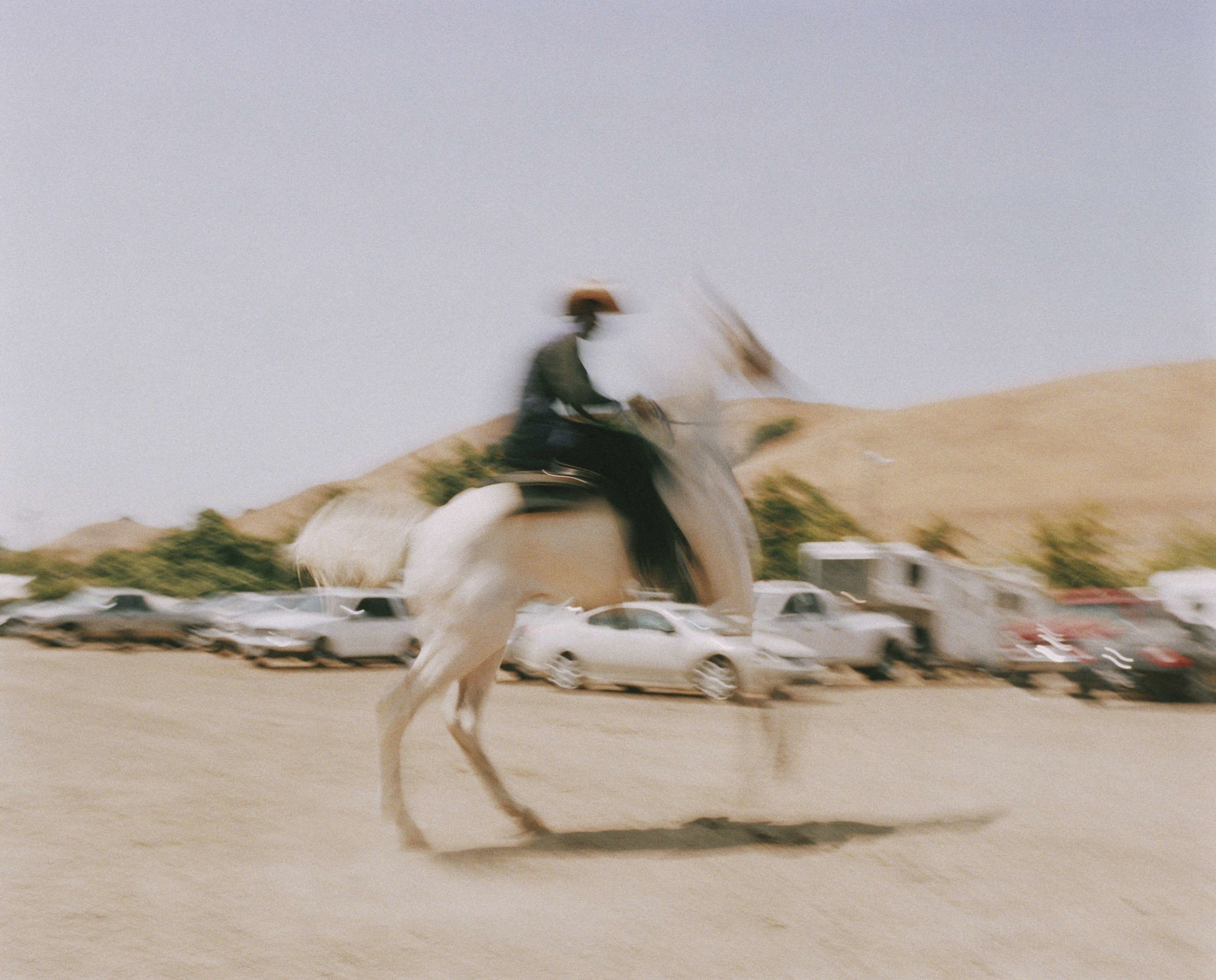
What would you like viewers to think about when they look at your images?
I hope people look beyond the surface — the beautiful colors, the light — and sense the depth in these images. Every portrait carries a story: of resilience, of history, of pride. These cowgirls and cowboys aren’t just performers; they’re mentors, leaders, and culture-keepers.
There’s often this misconception that horseback riding and rodeo culture belong to the wealthy or to a particular history. But the people I photograph are carving out their own space, often with limited resources, to pass on tradition, joy, and discipline to the next generation. Groups like Team Scott, Brotherhood Riders Youth Club, Urban Cowgirl, and Horses with Styles are creating safe, empowering spaces for youth. I want viewers to feel that complexity — that mix of beauty, legacy, and defiance — all at once.
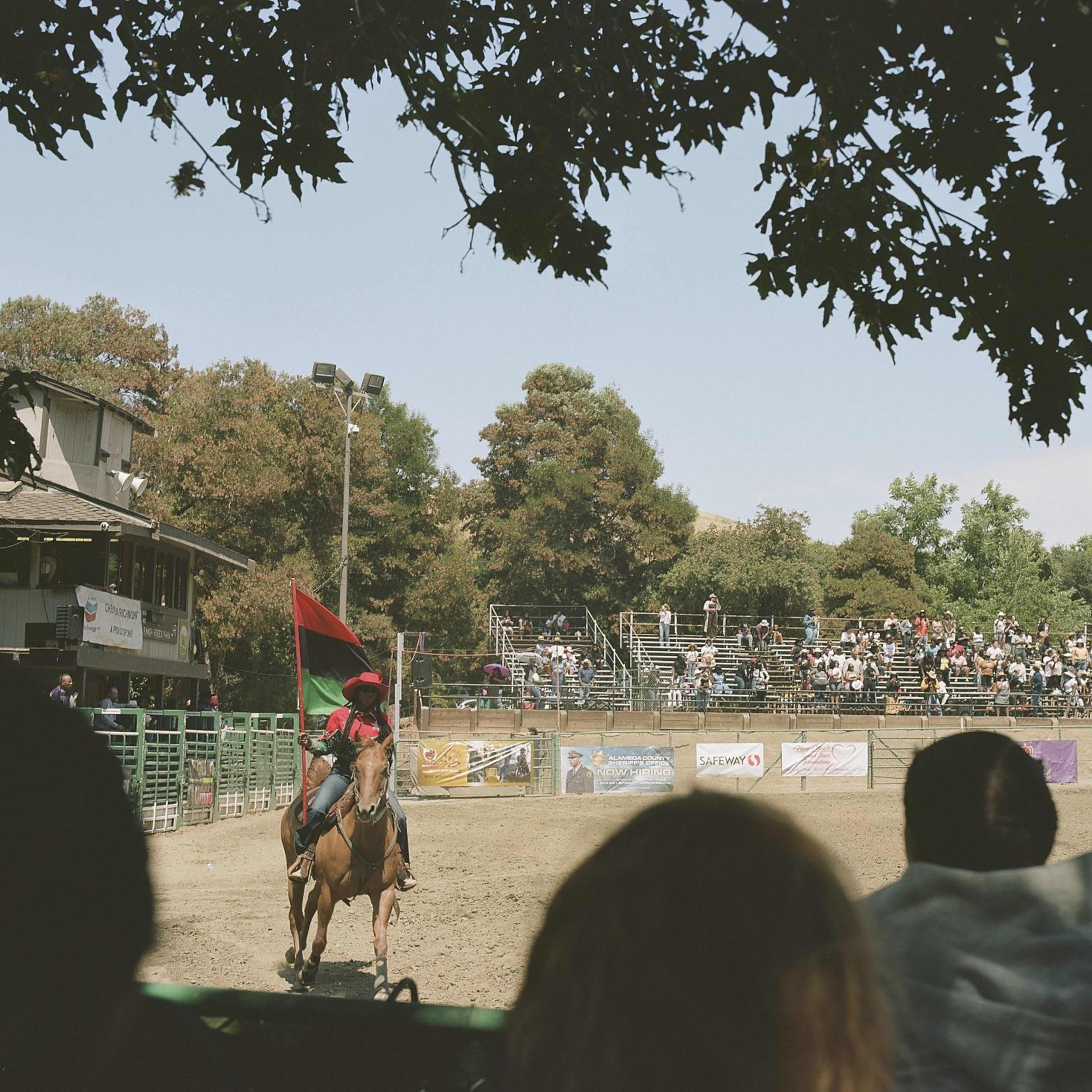
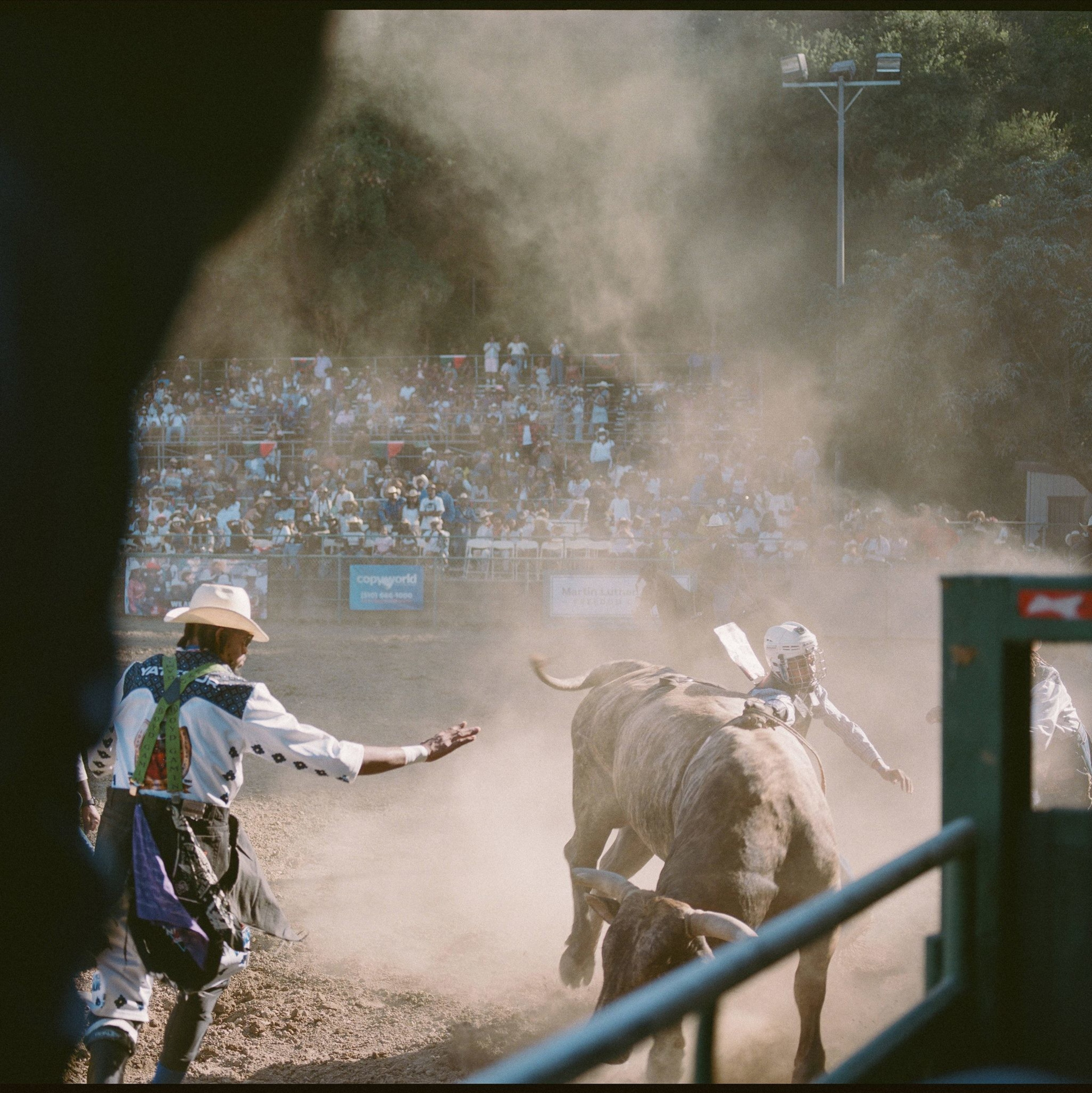
Hasbun will speak and show her short film about the Bill Pickett Invitational Rodeo during NightLife Goes West on Thursday at the California Academy of Sciences.
If you are interested in submitting your work to The Wide Shot, contact us at [email protected]
